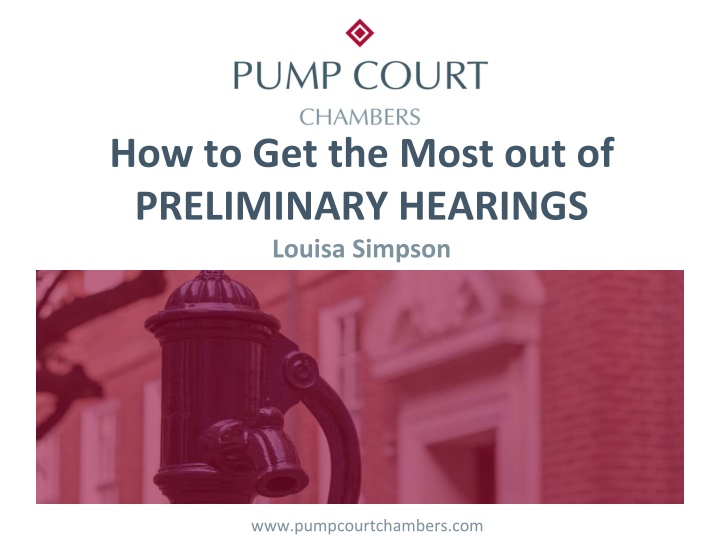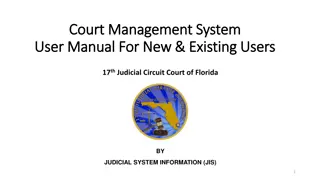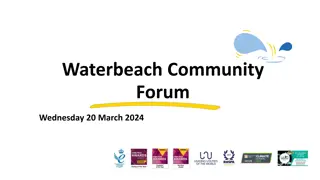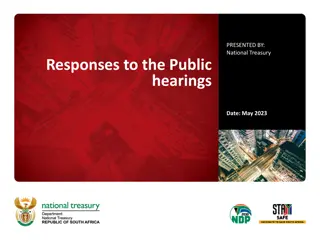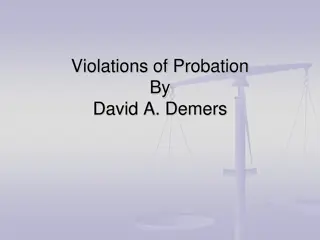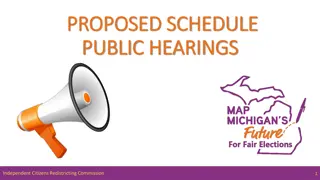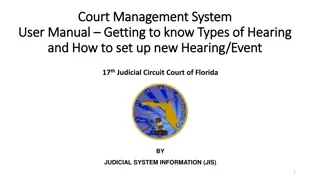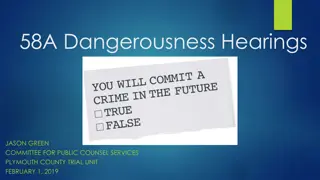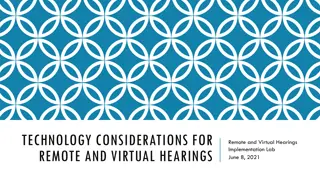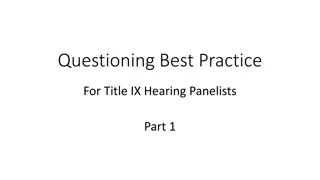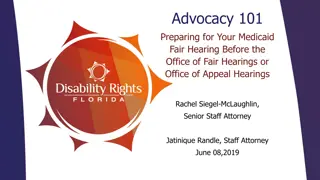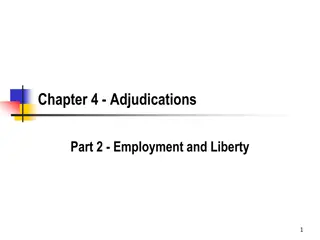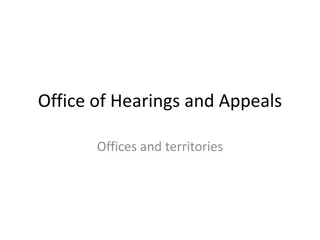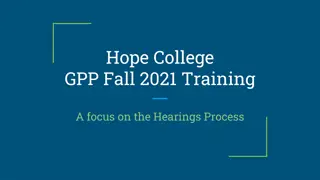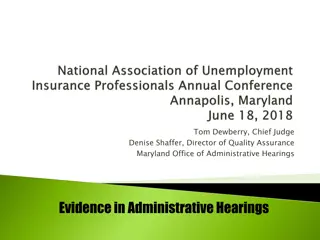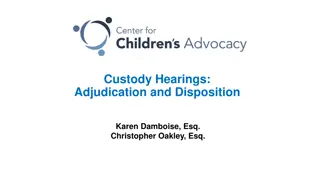Maximizing Preliminary Hearings: Type 1 or Type 2 Considerations
Preliminary hearings play a crucial role in the legal process, offering opportunities for case management, determining preliminary issues, and exploring settlements. Understanding the types of preliminary hearings and what can be achieved in each is key to optimizing these proceedings. This guide provides insights on the scope of preliminary hearings, rules governing public vs. private hearings, and the significance of preliminary issues in determining liability. Real-life case examples shed light on the practical application of rules and considerations in preliminary hearings.
Download Presentation

Please find below an Image/Link to download the presentation.
The content on the website is provided AS IS for your information and personal use only. It may not be sold, licensed, or shared on other websites without obtaining consent from the author.If you encounter any issues during the download, it is possible that the publisher has removed the file from their server.
You are allowed to download the files provided on this website for personal or commercial use, subject to the condition that they are used lawfully. All files are the property of their respective owners.
The content on the website is provided AS IS for your information and personal use only. It may not be sold, licensed, or shared on other websites without obtaining consent from the author.
E N D
Presentation Transcript
How to Get the Most out of PRELIMINARY HEARINGS Louisa Simpson www.pumpcourtchambers.com
Type 1 or Type 2? ET Rules of Procedure 2013, Rules 53-56 Type 1: the Private PH (case management) Type 2: the Public PH (substantive preliminary issues) Be aware of what can & cannot be achieved at either
ET Rules, r. 53(1) Scope 53. (1) A preliminary hearing is a hearing at which the Tribunal may do one or more of the following (a) conduct a preliminary consideration of the claim with the parties and make a case management order (including an order relating to the conduct of the final hearing); (b) determine any preliminary issue; (c) consider whether a claim or response, or any part, should be struck out under rule 37; (d) make a deposit order under rule 39; (e) explore the possibility of settlement or alternative dispute resolution (including judicial mediation).
r. 56 When PHs shall be in public 56. Preliminary hearings shall be conducted in private, except that where the hearing involves a determination under rule 53(1)(b) or (c), any part of the hearing relating to such a determination shall be in public (subject to rules 50 and 94) and the Tribunal may direct that the entirety of the hearing be in public.
Preliminary issue 53. (3) Preliminaryissue means, as regards any complaint, any substantive issue which may determine liability (for example, an issue as to jurisdiction or as to whether an employee was dismissed).
Preliminary issue cont. Queensgate Investments LLP and others v Millet UKEAT/0256/20: Q: Does the matter to be dealt with at the PH determine a substantive preliminary issue or application (not for CM). Apps for interim relief fall within r.53(3), despite not being a final determination of liability [20]. Because they determine underlying (civil) rights and obligations [63], and have permanent consequences. Mendy v Motorola Solutions UK Ltd [2022] EAT 47: At private PH for CM, EJ found Cl had brought no discernible claim of indirect discrimination EAT found this was tantamount to a strike out and should have been in public.
rr. 53(2), 54 & 55 53. (2) There may be more than one preliminary hearing in any case. 54. A preliminary hearing may be directed by the Tribunal on its own initiative at any time or as the result of an application by a party. The Tribunal shall give the parties reasonable notice of the date of the hearing and in the case of a hearing involving any preliminary issues at least 14 days notice shall be given an the notice shall specify the preliminary issues that are to be, or may be, decided at the hearing. 55. Preliminary hearings shall be conducted by an Employment Judge alone, except that where notice has been given that any preliminary issues are to be, or may be, decided at the hearing a party may request in writing that the hearing be conducted by a full tribunal in which case an Employment Judge shall decide whether that would be desirable.
The List of Issues Do them yourself (or get Counsel to), rather than the ET setting them out Get in there first before the other side Attempt to have a LOI agreed (as far as is possible) before the PH Use the LOI to your advantage to identify missing info from other side; to set out exactly what is pleaded (& therefore identify any true amendments) Take care to ensure the LOI accurately reflects your pleadings Tucker v Partnership in Care Ltd UKEAT/0455/09
The Case Management Agenda Again get in there first And create one joint (if not agreed) CMA for the Tribunal consider added column for Cl/R Think about (& have instructions on) in advance: Correct R identity? Number of witnesses, timetable & length of hearing How long it might take to get medical records FMH in person or remote? Reasonable adjustments required? Judicial mediation?
The Bundle Not strictly necessary but ET will thank you Include: ACAS Cert Pleadings, incl. any amends Orders & ET corro Inter partes corro, only relevant Joint/agreed CMA & LOI
Instructing Counsel Have Counsel attending complete CMA & LOI Ensure Counsel has instructions, in particular, on: Employment/worker status; Dates of specific events & employment; Disability & knowledge; Any missing/requested info from your side; Dates to avoid for & relevance of witnesses.
Using a PH (for Case Management) to your advantage Obtaining missing info Specific early disclosure Clarifying claims / apps to amend r.30 Confirming dates for time limits EJ indications Judicial Mediation OPH required for any purpose? WhatsApp group with counsel/clients Be cooperative, appear reasonable
Public Preliminary Hearings Prepare for oral evidence Written submissions Be clear on issues for consideration Be pro-active and cooperative Concede where appropriate Bundles be proportionate Be prepared to deal with case management issues at the end
After the PH Diarise all CMDs Compare Counsel s note of dates to the CMO Write to ET ASAP if any issues with CMO or LOI Consider settlement discussions
